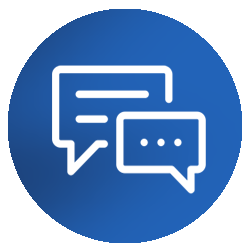
Today’s jobs report showed strong employment growth after two consecutive months of weaker gains, reflecting a recovery from Delta’s negative impact on the economy. As of October, there are no signs that severe labor shortages in the US are easing. Nonfarm payroll employment increased by 531,000 in October, after an upwardly revised increase of 312,000 in September and 483,000 in August. The unemployment rate ticked down from 4.8 to 4.6 percent. Overall, jobs still number 4.2 million below February 2020 levels. Women represent 57 percent of these job losses. The labor force participation rate remained unchanged at 61.6 percent. After stagnating in August and September, the strong recovery in the leisure and hospitality industry resumed in October, adding 164,000 jobs. Job growth was strong across most industries, with government education being a notable exception. The rapid wage inflation in October suggests that the US labor market is still experiencing severe labor shortages, despite the expiration of the enhanced unemployment benefits and the reopening of schools. Some are delaying a return to the labor market because they still fear the virus. In addition, older Americans' labor participation rate significantly declined during the pandemic—and there are no signs of it recovering. Moreover, many working-age Americans have become more selective in terms of the jobs they are willing to consider, or they have decided to stop working altogether. Even though schools have reopened, many parents still face barriers to returning to work. The ongoing spread of the virus is leading to many disruptions in in-person teaching. In addition, the childcare industry is far from fully recovered, and some parents do not have a childcare solution for their children. While some people are returning to the labor market, the sheer number of them is disappointing. The labor force participation rate has been relatively unchanged since April, despite rapid wage growth. And any additional job seekers are gobbled up by the US economy reopening, leading to a rapid drop in the unemployment rate. Average hourly earnings increased 5.7 percent (annual rate) over the past seven months, and other labor market indicators also show that employers are having difficulties attracting and retaining workers. The most likely scenario is that many Americans will return to the labor market in the coming months, and job-search intensity among job seekers will increase, as their savings gradually deplete, leading to labor shortages easing a bit. But while severe shortages continuing into 2022 is not the most likely scenario, the chances of it are significantly increasing. In that case, a wage-price spiral—where higher prices and rising wages feed each other, leading to faster increases in both—could have major economic implications. In such an environment, the Federal Reserve might be forced to raise interest rates significantly more than the two hikes markets are currently expecting. This would slow GDP growth to well below current expectations by economists.Commentary on October U.S. Bureau of Labor Statistics Employment Situation Report

Retail Sales Show Consumers Stock Up ahead of Tariffs
April 16, 2025
US Seeks Shipbuilding Revival, Muting of China Dominance
April 14, 2025
March CPI May Hint at Consumer Pullback as Tariffs Rise
April 10, 2025
The US-China Trade War Escalates
April 09, 2025
Charts
Wage inequality continues downward trend in quarter 2 of 2023
LEARN MORECharts
Recent hikes in quits rates indicate retention difficulties across all industries, but have nearly approached pre-pandemic levels
LEARN MORECharts
Decline in office and administrative support work suggests certain tasks and skills have been replaced by automation
LEARN MORECharts
CEOs are having trouble filling positions as the unemployment rate drops lower
LEARN MORECharts
Non-union wages are growing faster than union wages
LEARN MORECharts
This index identifies the risk of future labor shortages for specific occupations.
LEARN MORECharts
Labor shortages and the tightening of labor markets have led companies to lower education requirements when recruiting.
LEARN MORECharts
The rapid rise in job openings to historic highs coupled with increasingly more workers quitting is leading to severe labor shortages, especially in leisure & hospita…
LEARN MORECharts
There has been a large increase in the share of office job ads that mention remote work since before the pandemic.
LEARN MOREPRESS RELEASE
Why the World Is Running Out of Workers
August 13, 2024
PRESS RELEASE
Report: As US Economy Grapples with Nearly 11 Million Unfilled Jobs, Immigr…
March 21, 2023
PRESS RELEASE
Difficulty Finding and Retaining Office Workers Skyrockets
May 05, 2022
PRESS RELEASE
CED Report Outlines Ways to Tackle Ongoing Labor Shortages
April 20, 2022
PRESS RELEASE
Tepid Job Gains Highlight Hiring Difficulties
June 04, 2021
PRESS RELEASE
Report: As COVID-19 Recedes, Labor Shortages Return as a Key Challenge for …
May 28, 2021
